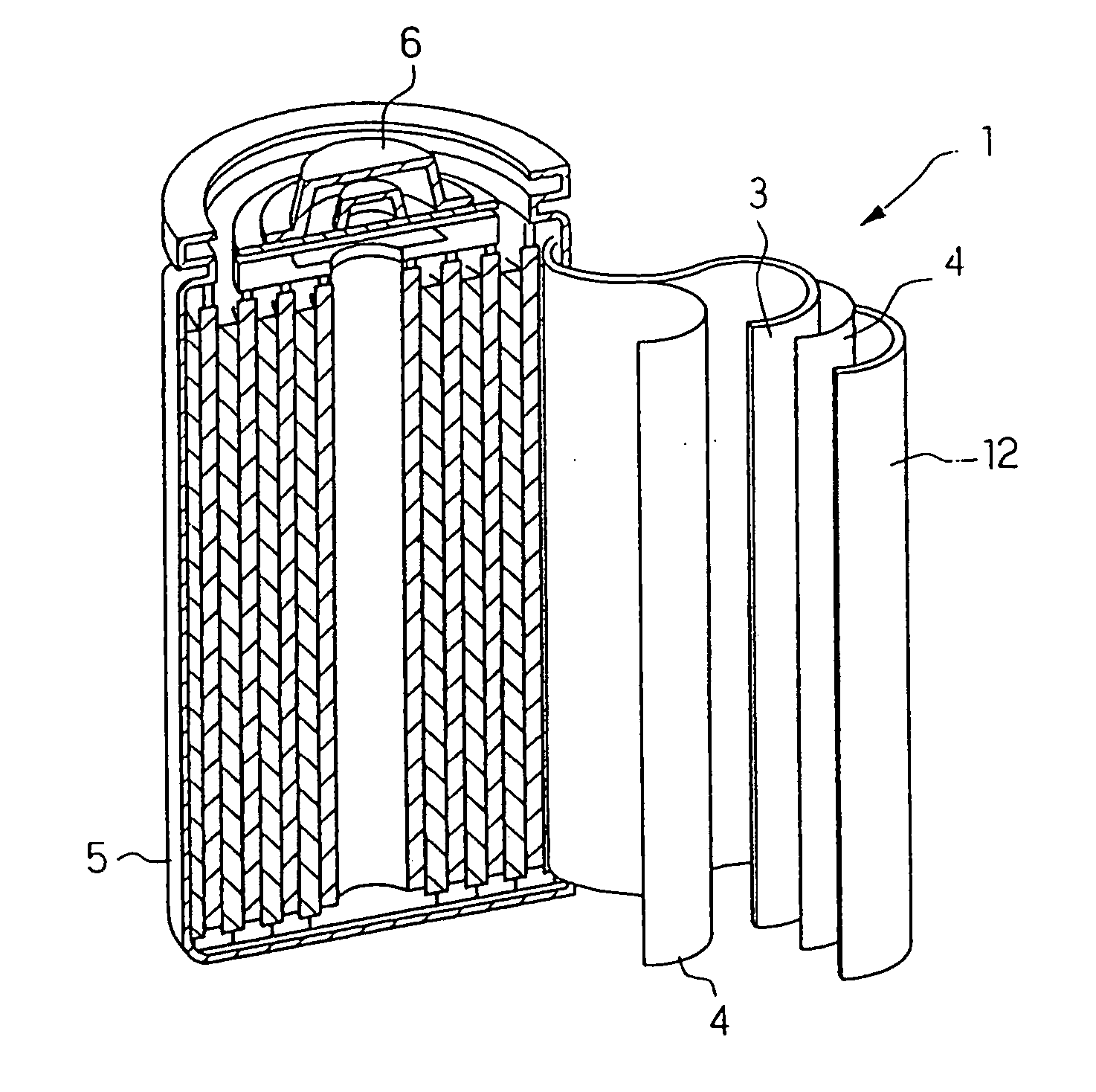Composition for protecting negative electrode for lithium metal battery, and lithium metal battery fabricated using same
a technology for lithium metal batteries and negative electrodes, which is applied in the direction of cell components, final product manufacturing, sustainable manufacturing/processing, etc., can solve the problems of deterioration of battery cycle life characteristics, and achieve the effect of preventing side reactions and improving battery cycle li
- Summary
- Abstract
- Description
- Claims
- Application Information
AI Technical Summary
Benefits of technology
Problems solved by technology
Method used
Image
Examples
example 1
9 g of a diethylene glycol diacrylate multifunctional monomer, 5 g of a polyethylene glycol methylether methacrylate (molecular weight: 300) reactive monomer, 6 g of a polyethylene glycol dimethylether (molecular weight: 250) plasticizer, 2.06 g of a LiCF3SO3 lithium salt, and 0.065 g of a benzoinethylether photoinitiator were mixed to completely dissolve the lithium salt and the photoinitiator, thereby obtaining a composition for protecting a negative electrode.
The composition was coated on a glass substrate with a predetermined thickness. A spacer for controlling thickness was then settled on each end of the substrate and another glass substrate was covered thereon, in order to obtain a film with a uniform thickness. Thereafter, the substrate was irradiated with ultraviolet light (365 nm wavelength) for 2 minutes, which cured and hardened the coating, yielding a 20 μm thick transparent protective layer.
The protective layer was located between stainless steel plates, and its a...
example 2
5.4 g of a diethylene glycol diacrylate multifunctional monomer, 5.4 g of a polyethylene glycol methylether methacrylate (molecular weight 300) reactive monomer, 9.2 g of a polyethylene glycol dimethyl ether (molecular weight 250) plasticizer, 5.76 g of a LiN(CF3SO2)2 lithium salt, and 0.048 g of a benzoinethyl ether photoinitiator were mixed to completely dissolve the lithium salt and the photo initiator, thereby obtaining a composition for protecting a negative electrode.
Using the composition, a cross-linked protective layer was produced according to the same procedure as in Example 1, and its ionic conductivity was measured. The measured ionic conductivity was 4.7×10−6 S / cm. The obtained protective layer was transparent and exhibited good adhesion, ductility, and mechanical strength.
example 3
4 g of a diethylene glycol diacrylate multifunctional monomer, 4 g of a polyethylene glycol methylether methacrylate (molecular weight 300) reactive monomer, 12 g of a polyethylene glycol dimethylether (molecular weight 2500 plasticizer, 6.12 g of a LiN(CF3SO2)2 lithium salt, and 0.038 g of a benzoinethylether photoinitiator were mixed to completely dissolve the lithium salt and the photoinitiator, thereby obtaining a composition for protecting a negative electrode.
Using the composition, a cross-linked protective layer was produced according to the same procedure as in Example 1 and the ionic conductivity was measured. The measured ionic conductivity was 2.7×10−4 S / cm. The obtained protective layer was transparent and exhibited good adhesion and ductility, but slightly weak mechanical strength.
PUM
 Login to View More
Login to View More Abstract
Description
Claims
Application Information
 Login to View More
Login to View More - R&D
- Intellectual Property
- Life Sciences
- Materials
- Tech Scout
- Unparalleled Data Quality
- Higher Quality Content
- 60% Fewer Hallucinations
Browse by: Latest US Patents, China's latest patents, Technical Efficacy Thesaurus, Application Domain, Technology Topic, Popular Technical Reports.
© 2025 PatSnap. All rights reserved.Legal|Privacy policy|Modern Slavery Act Transparency Statement|Sitemap|About US| Contact US: help@patsnap.com



